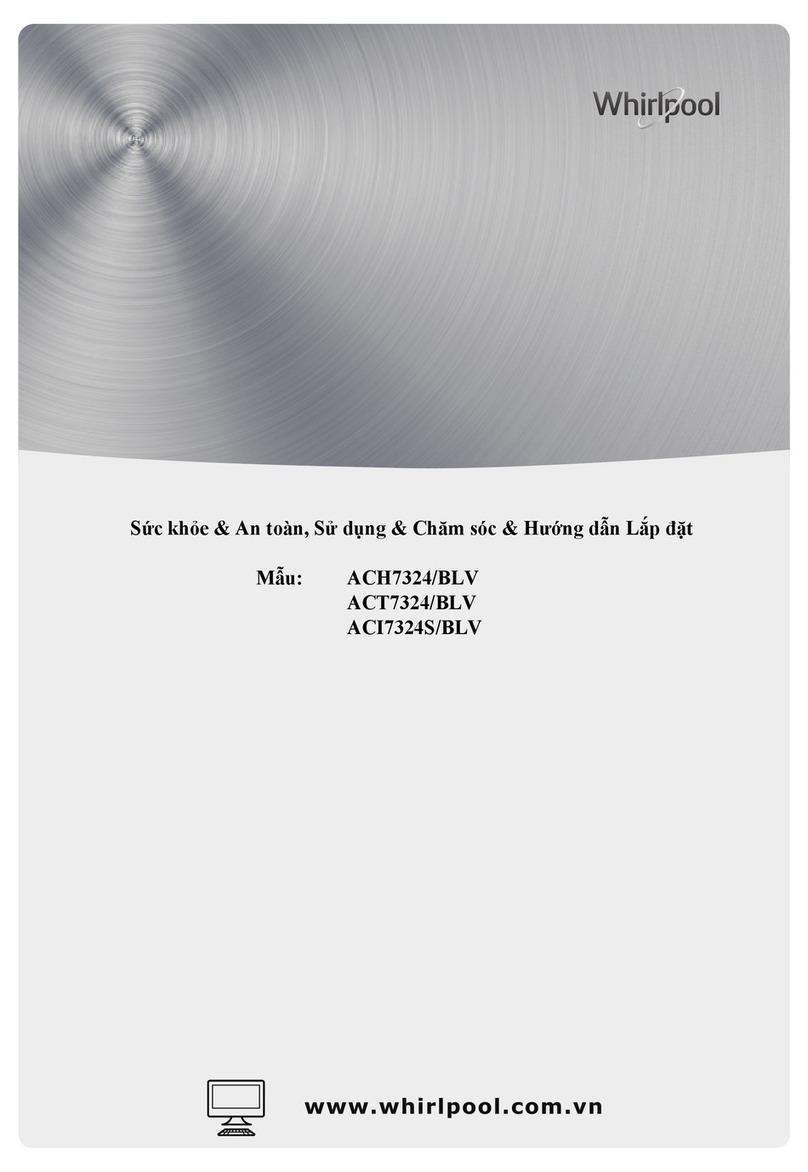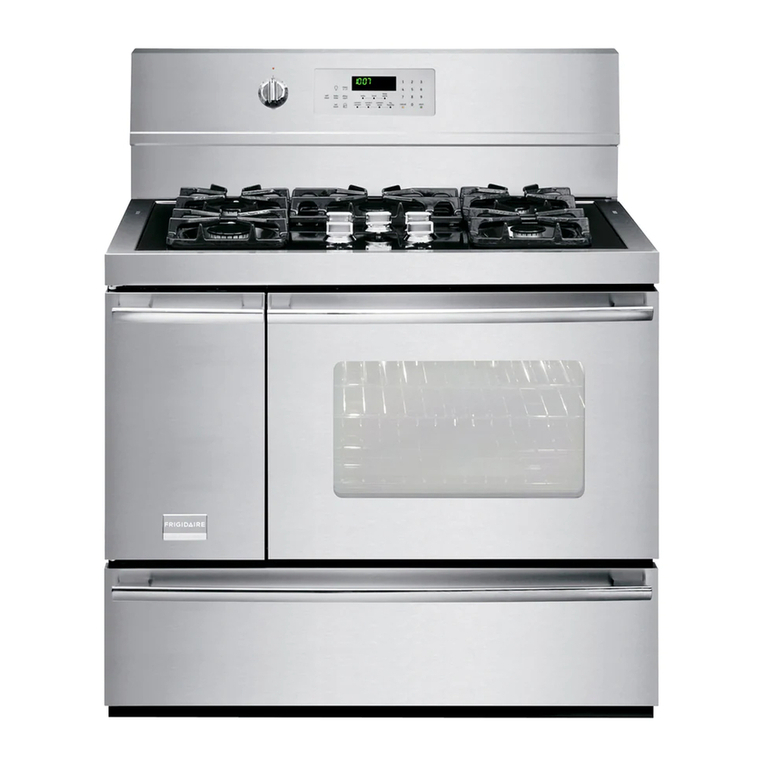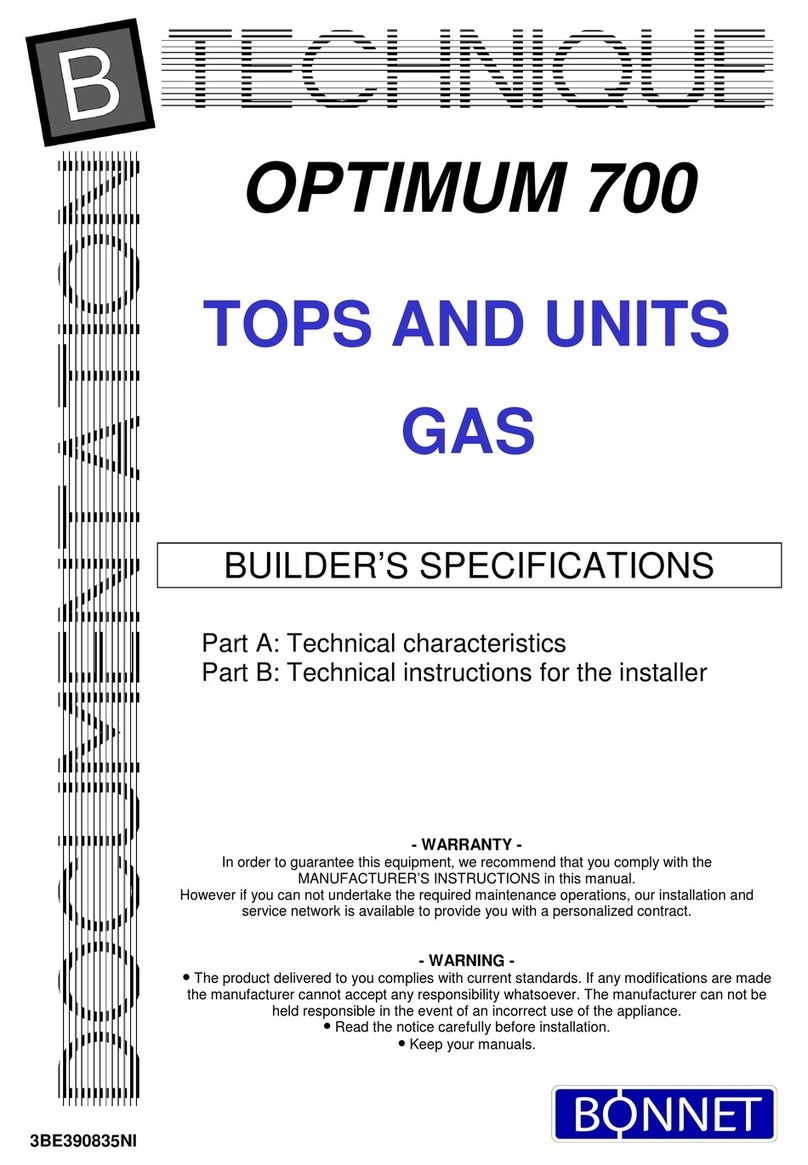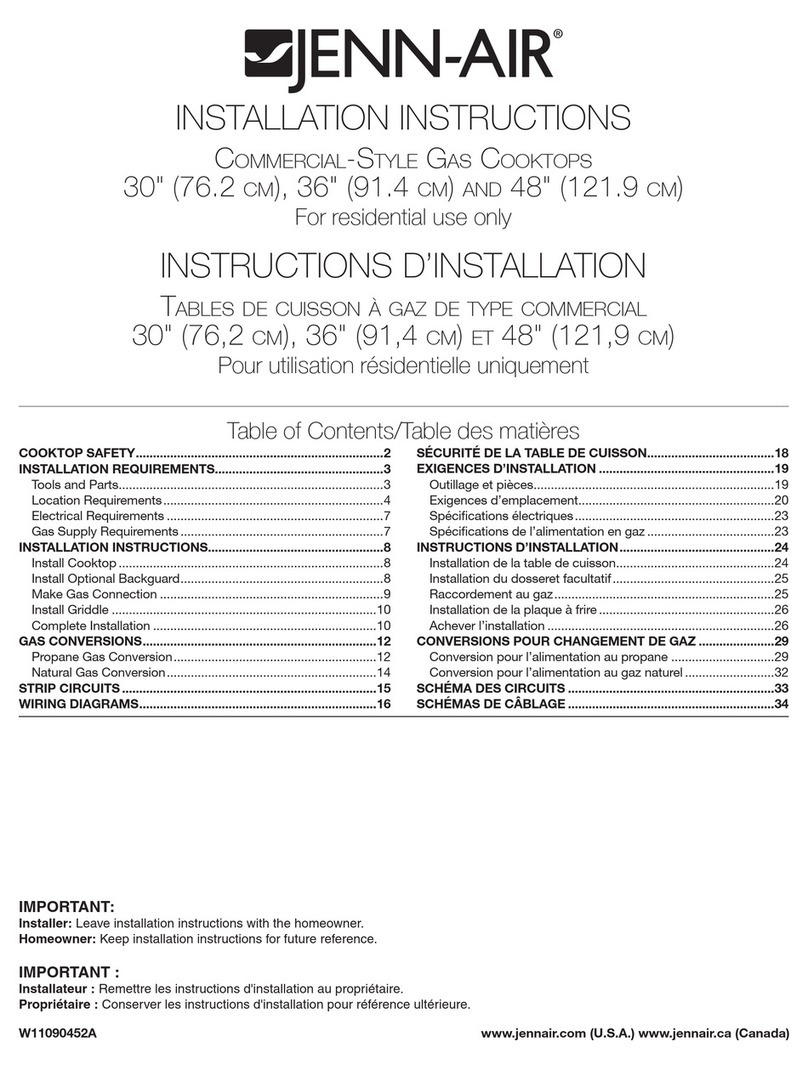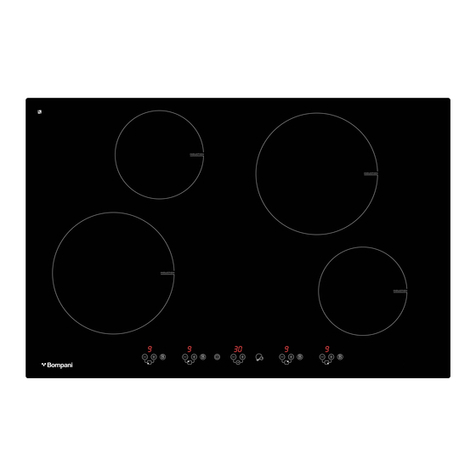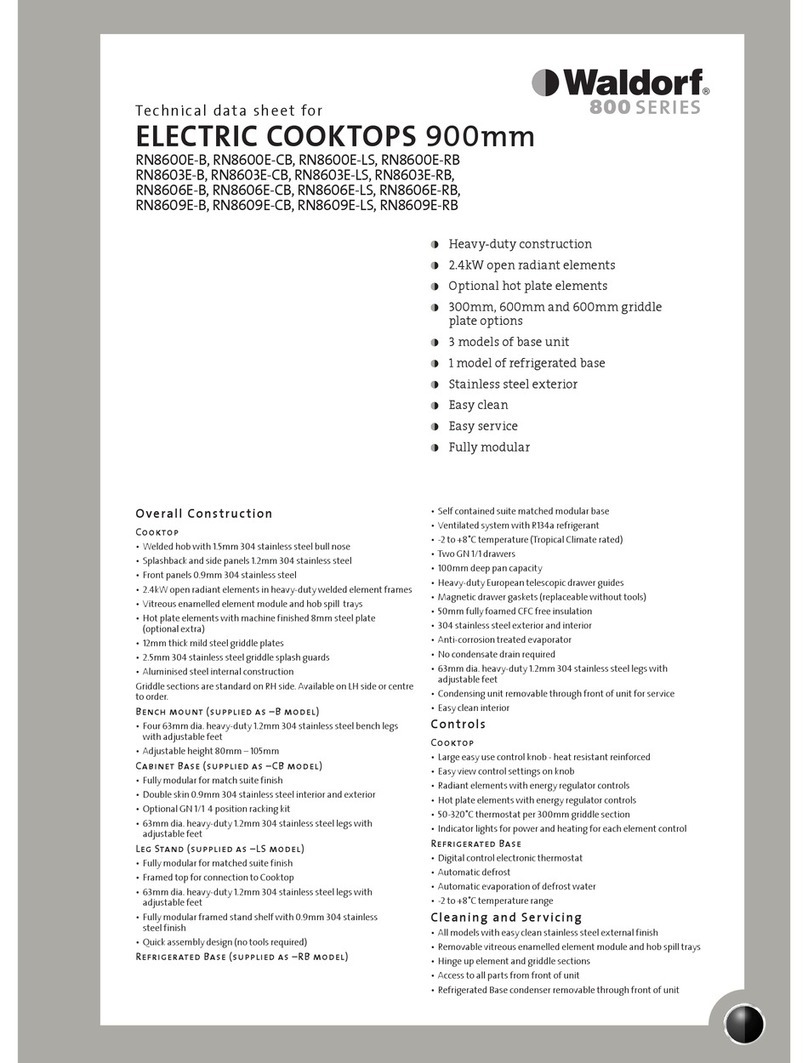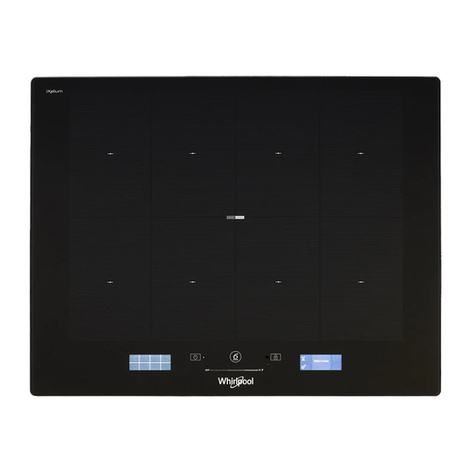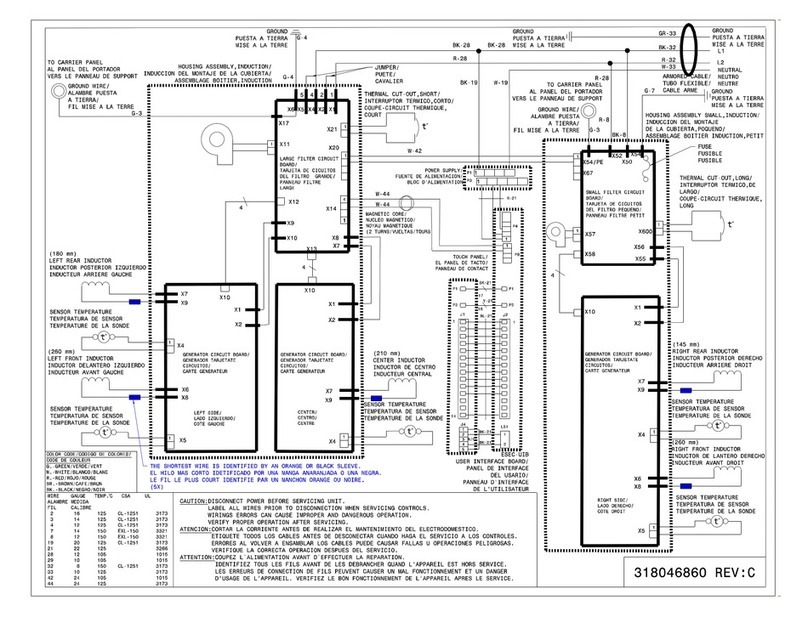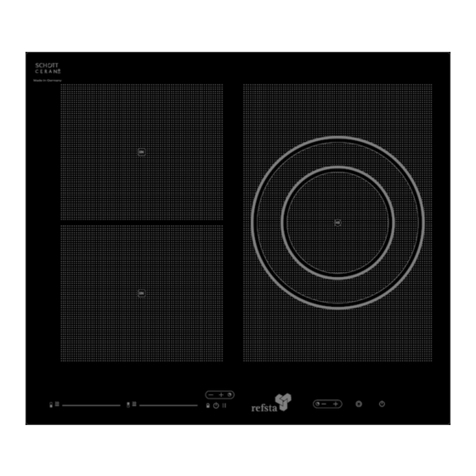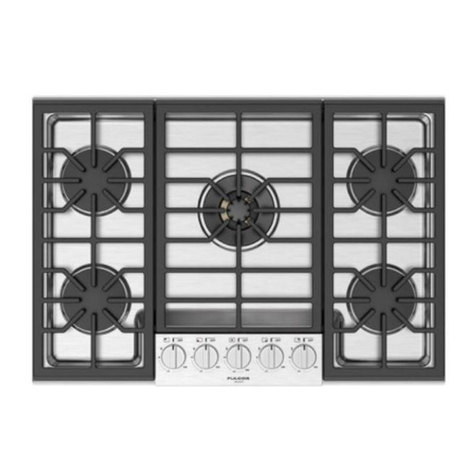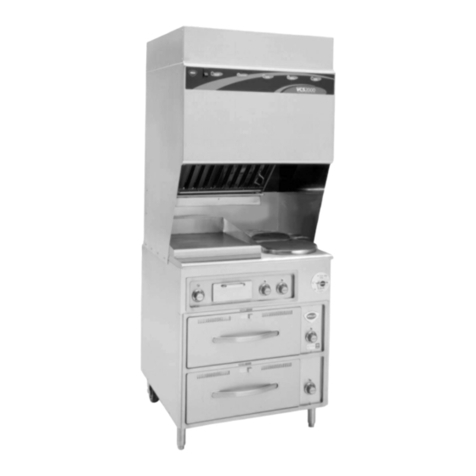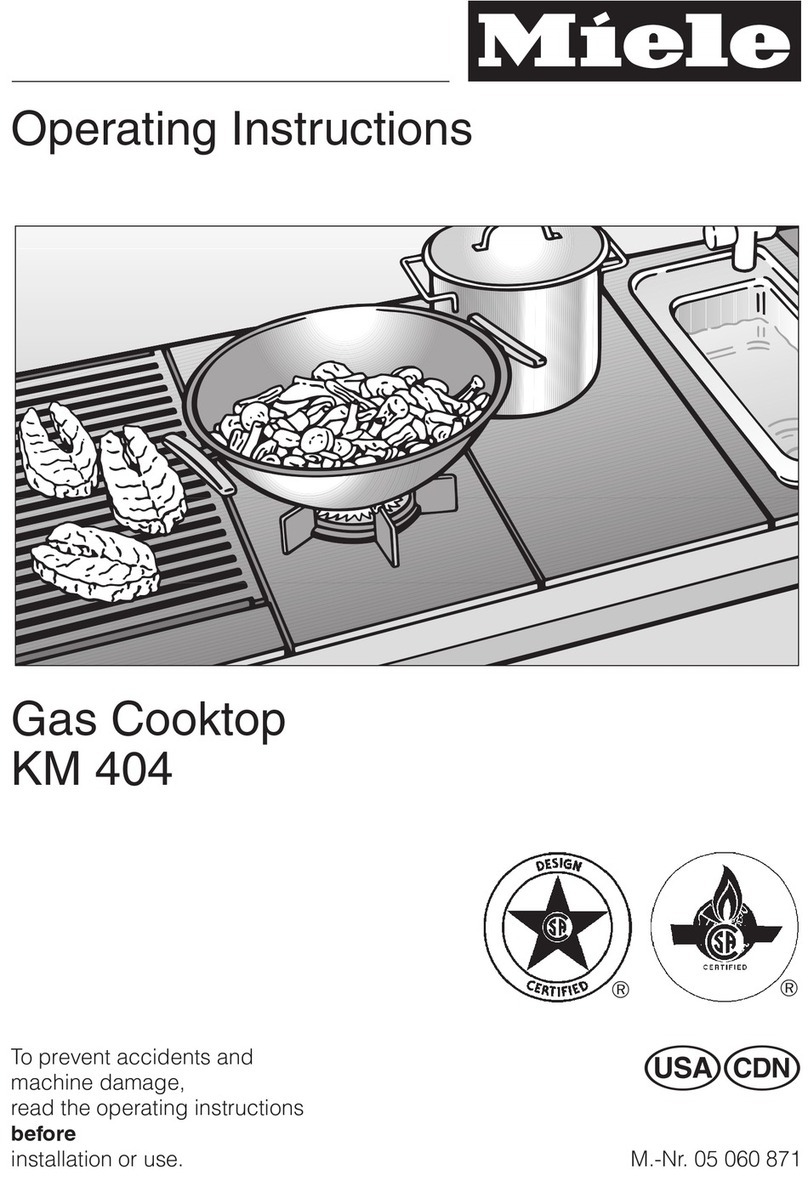
ITALIANO
1-GENERALITA‘
Leggere attentamente il contenuto del presente libretto in quanto
fornisce importanti indicazioni riguardanti la sicurezza di
installazione, di uso e di manutenzione. Conservare il libretto per
ogni ulteriore consultazione.
Tutte le operazioni relative all’installazione (connessioni elettriche)
devono essere effettuate da personale specializzato in conformità
alle leggi e alle norme vigenti.
2-AVVERTENZE PER LA SICUREZZA
Si consigliano recipienti a fondo piatto del diametro uguale o
leggermente superiore a quello dell’area riscaldata (Fig. 6).
RECIPIENTI PER LA COTTURA
L’utilizzo di recipienti appropriati è un fattore essenziale per la
cottura ad induzione.
Verificate che le vostre pentole siano idonee per il sistema ad
induzione. Il simbolo internazionale che identifica se la pentola è
idonea alla cottura ad induzione è illustrato in Fig. 6.
I recipienti devono quindi contenere ferro.
Potete verificare se il materiale della pentola è magnetico con una
semplice calamite.
Non utilizzare recipienti con base ruvida,per evitare di graffiare la
superficie del vetro del piano. Questo apparecchio non è adatto per
l’uso da parte di bambini o persone che necessitano di supervisione.
3-IMPORTANTE
Evitare le fuoriuscite di liquido.
Non lasciare gli elementi riscaldanti accesi senza recipienti o con
recipienti vuoti.
Una volta terminato di cucinare, spegnere la relativa resistenza
tramite il comando indicato in seguito (paragrafo 8) .
Utilizzando delle friggitrici é necessario controllarle
costantemente perché l’olio surriscaldato potrebbe incendiarsi.
Se la superficie del vetro é incrinata , spegnere
l’apparecchio e disconnettere dalla rete elettrica per evitare
l’eventualità di scosse elettriche.
4-ISTRUZIONI PER L‘INSTALLAZIONE
Il produttore declina qualsiasi responsabilità per danni dovuti ad
una installazione non corretta o non conferme alle regole dell’arte
e non eseguita da personale specializzato nel rispetto delle
vigenti norme in vigore nel paese di installazione.
Nel caso in cui nella stanza vengono utilizzati simultaneamente sia la
cappa che altri apparecchi non alimentati da energia elettrica, bisogna
provvedere ad areare il locale.
Se un forno da incasso o qualsiasi altra apparecchiatura che genera
calore deve essere montato direttamente sotto il piano di cottura in
vetroceramica, E’ NECESSARIO CHE TALE APPARECCHIATURA
(forno) E IL PIANO DI COTTURA SIANO ADEGUATAMENTE
ISOLATI LASCIANDO UNA INTERCAPEDINE MINIMA COME
(Fig. 4).
Il mancato rispetto di tale precauzione potrebbe determinare l’errato
funzionamento del sistema TOUCH CONTROL.
L’elettrodomestico è realizzato per essere incassato in un piano di
lavoro, come illustrato nella figura (Fig 1). Predisporre materiale
sigillante lungo l’intero perimetro- Fig. 5. Questa operazione è
necessaria per evitare che eventuali liquidi penetrino all’interno del
piano.
Bloccare l’elettrodomestico sul piano di lavoro mediante i 4 sostegni “S”
(Fig. 2) , tenendo presente lo spessore del piano di lavoro.
Se la parte inferiore dell’apparecchio, dopo l’installazione, è accessibile
dalla parte inferiore del mobile è necessario montare un pannello
separatore rispettando le distanze indicate (Fig. 4).
5- VERSIONE ASPIRANTE / FILTRANTE
ASPIRANTE : l’aria aspirata viene purificata attraverso i filtri
antigrasso metallici e convogliata all’esterno attraverso una
canalizzazione.
5.1- USCITA ARIA SOTTO IL PIANO DI LAVORO
Montare la scatola di derivazione „F“ (Fig 15) attraverso le . 4 viti “V”
(Fig 15) . Collegare, mediante un tubo di raccordo al foro di scarico
come indicato in Fig. 13/14. Nel caso in cui l’appartamento sia dotato
di una condotta esterna per l’aria di diverso diametro applicare un
raccordo riduzione appropriato.
5.2- USCITA ARIA NELLA PARETE POSTERIORE
Smontare lo schienale „S“ (Fig 17) attraverso le n. 2 viti “V” (Fig.
17).
Montare il coperchio “T” (Fig. 19) attraverso le 4 viti “V” (Fig. 19)
Smontare il gruppo di aspirazione “G” (Fig. 17).
Eseguire i 4 fori "F" (Fig.18) nella parete posteriore, in
corrispondenza del foro di uscita aria verso l'esterno. Montare il
gruppo di aspirazione "G" (Fig.17) alla parete posteriore e
bloccare con n.4 viti. Per il fissaggio del gruppo di aspirazione
utilizzare tasselli e viti idonee al tipo di muratura della parete.
FILTRANTE: l'aria aspirata viene purificata attraverso i filtri
antigrasso "M" (Fig.12) e un filtro a carbone attivo "C"(Fig.11),
venduto separatamente. L'aria, filtrata e depurata viene rimessa
nell'ambiente interno.
Se si desidera convogliare l'aria filtrata, si può installare una
condotta collegandola alla scatola di derivazione "F" (Fig.15)
Per trasformare la cappa da versione aspirante a versione
filtrante, è necessario richiedere al vostro rivenditore il kit filtrante
e seguire le istruzioni di montaggio contenute nel Kit.
FILTRI ANTIGRASSO METALLICI (Fig.12).
I filtri antigrasso hanno il compito di trattenere le particelle
grasse in sospensione nell’aria, pertanto sono soggetti ad
intasarsi in tempi variabili relativamente all’uso dell’apparecchio.
In ogni caso, per prevenire il pericolo di eventuali incendi, al
massimo dopo 2 mesi è necessario pulire i filtri eseguendo le
seguenti operazioni:
Togliere i filtri dalla cappa "M" (Fig.12) e lavarli con una
soluzione di acqua e detergente liquido neutro, lasciando
rinvenire lo sporco.
Sciacquare abbondantemente con acqua tiepida e lasciare
asciugare.
I filtri possono essere lavati anche in lavastoviglie. Dopo alcuni
lavaggi si possono verificare delle alterazioni del colore. Questo
non dà diritto a reclamo per l’eventuale sostituzione dei pannelli.
FILTRI AL CARBONE ATTIVO (Fig.11).
I filtri al carbone attivo servono per depurare l’aria che verrà
rimessa nell’ambiente.
La saturazione del carbone attivo dipende dall’uso più o meno
prolungato dell’apparecchio, dal tipo di cucina e dalla regolarità
con cui viene effettuata la pulizia del filtro antigrasso.
Per estrarre il filtro carbone è necessario:
Smontare i filtri antigrasso metallici "M" (Fig.12), togliere il
supporto di tenuta "A" (Fig.11), tirandolo leggermente, estrarre il
filtro a carbone "C"(Fig.11).
I filtri a carbone del modello "R" (Fig. 16) sono rigenerabili:
lavare il filtro a carbone con acqua calda (65°), lasciare
asciugare poi mettere in forno a 100° per 10 minuti.
I filtri a carbone di tipo "R" sono rigenerabili fino ad un massimo
di 4 volte, dopodichè vanno sostituiti
I filtri a carbone del modello "T" (Fig.16), non sono rigenerabili e
vanno sostituiti quando esausti come indicato precedentemente.
6-CONNESSIONI ELETTRICHE (Fig.8)
Prima di effettuare le connessioni elettriche assicurarsi che:


